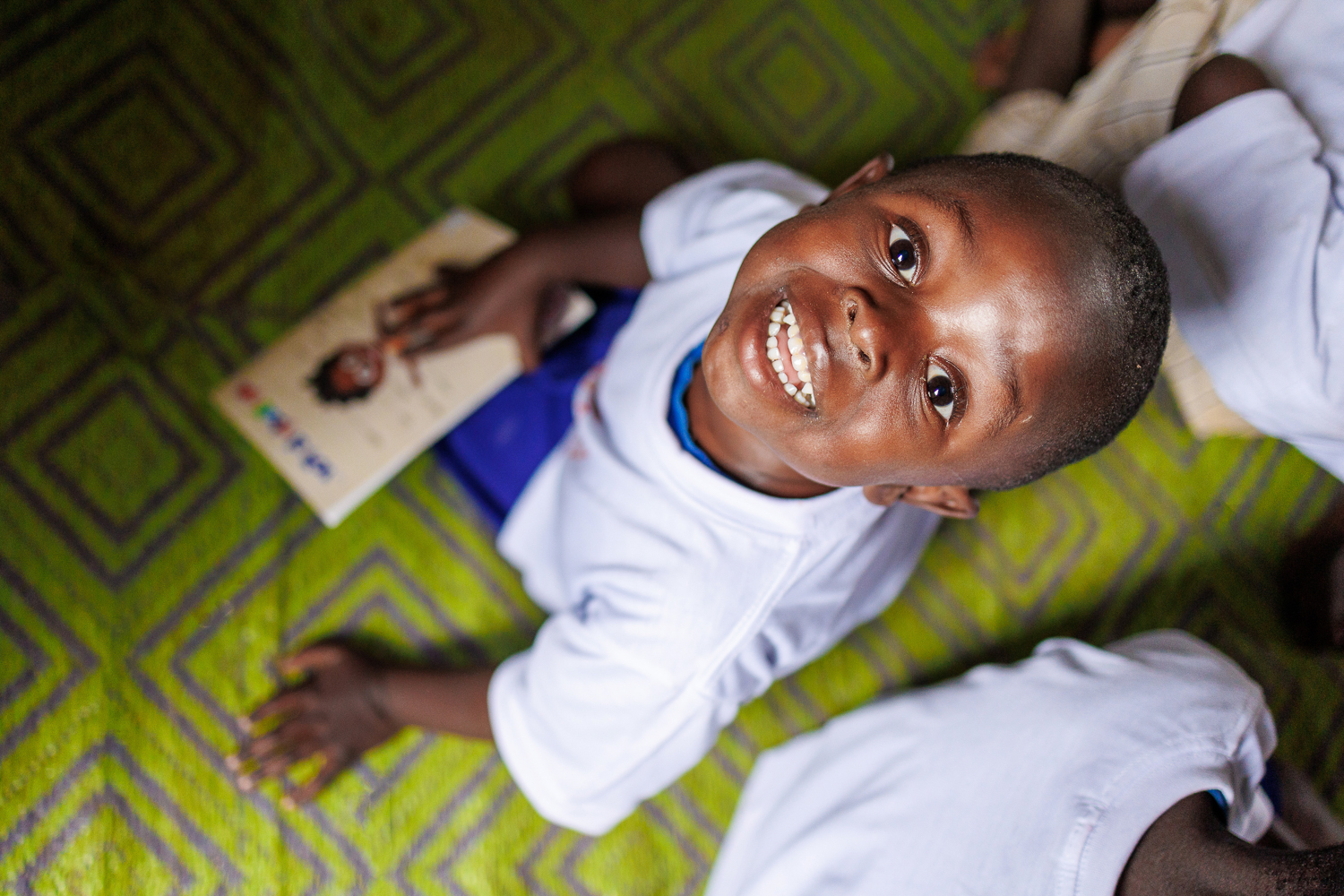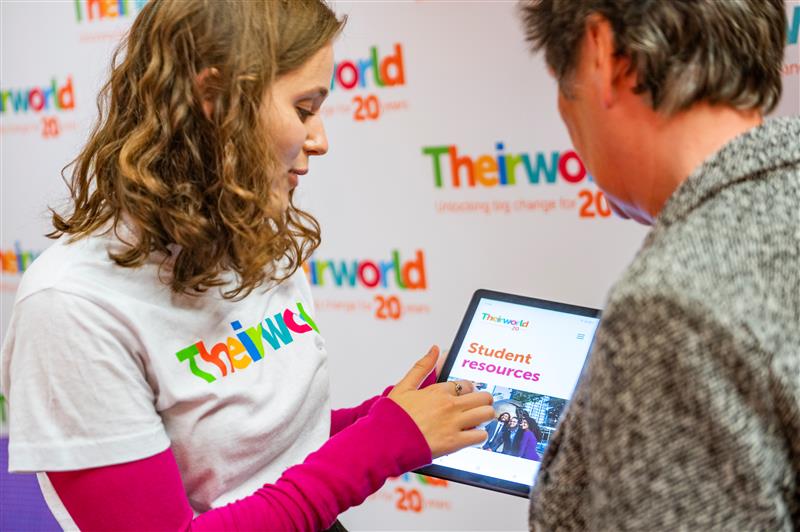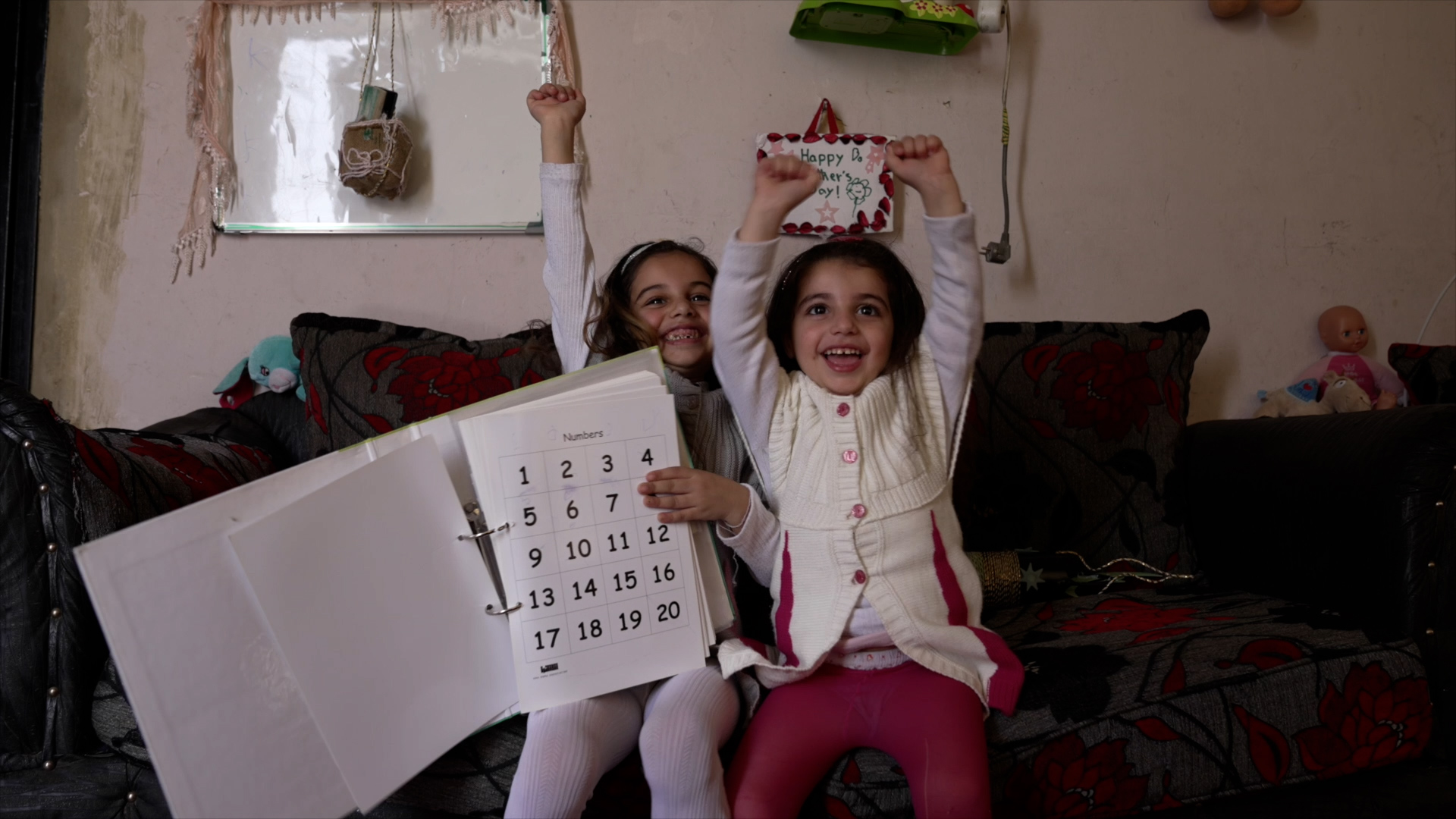
“We work with malnutrition, education and early stimulation to really improve the quality of childhood”
Childcare, Early childhood development, Right to education, Teachers and learning
Away from Delhi's tourist trails, an early childhood care programme is working as part of an overall development and conservation plan for a historic district.
Nizamuddin in Southern Delhi is named after the 14th-century Sufi saint. Off the tourist trails is a labyrinth of narrow gallis (lanes) – the area called Nizamuddin Basti has existed as an informal settlement since the saint’s time.
It is at the entrance of this enclave that Theirworld met with Jyothsna Lall, Director of Programmes at Nizamuddin Urban Renewal Initiative, part of Aga Khan Development Network’s historic cities programme. Lall has been overseeing seven nurseries that use a unique early childhood care model as part of the comprehensive development plan.
The early childhood development centre, part of the Sunder nursery that we visited, lies in the heart of the settlement, attached to an aanganwadi, a traditional mother and child centre that is also part of the initiative.

By renovating Humayun’s Tomb – an imposing 15th-century mausoleum and a UNESCO World Heritage site – and 29 other monuments that reside amid the basti’s homes, Aga Khan has employed heritage conservation as a stepping stone to the socio-economic development of indigenous communities.
It has become one of the most successful examples of integrating conservation, socio-economic growth and environmentally conscious urban development. The results speak for themselves – 150 acres landscaped, over 2000 individual craftsmen employed, another 2750 jobs created, 20,000 trees planted, almost 300,000 patients treated and 400 children provided with education.
In this interview, Lall explains how the programme aims to provide comprehensive development while fostering education as a lifelong aspiration for those living in the basti.
Aga Khan works in an integrated way. Could you explain the connection between the socio-economic development projects, the heritage conservation and education that is a lifelong process?
Our project is based on the understanding that there are just too many variables to say that if you plug one gap then the quality of life will improve.
We know that a community has several needs and therefore we try to work on three primary areas – education, health and livelihoods. Within education we split it up to look at children under six – early childhood development – as a special category because they are the most vulnerable category.
Anyone who works in development knows they are one of the most vulnerable groups. We also split it up because if you do only preschool education and don’t look at the health component, the education will not lead to improved learning – especially if the child is malnourished.
So we need to work with malnutrition, education and early stimulation if we are to really improve the quality of childhood in this case and we are to prepare the child for schooling and for an adult world.
Could you explain how the teachers you trained work with the children?
There is always one of our teachers and a helper and children come in for at least two and half to three hours. There are several activities for the socio-emotional language pre-numeracy and pre-literacy competence.
We work with the mothers as well to talk about nutrition, hygiene and safe habits. The teacher takes the children through a variety of activities – pre-literacy and pre-numeracy and language development, because our baseline survey indicated that because the early stimulation is so poor the children did not speak much.
The normal exchanges – the mother asking the child questions and the child answering – doesn’t really happen because most of the mothers go off to work early in the morning.
So it tends to be the elder sibling who is looking after the child. So we focus a lot on language development through rhymes, games questions and answers, and pretend conversations.
This centre also has a little house where children can run up and down.
For more physical movement there are parks where children take walks on a regular basis but we’ve also included play and song activities where the children move about. On some days there’s a bit of yoga as well.
Simulating the mother and child relationship at the learning centre is an interesting strategy. How does this impact the child’s development?
In an ideal world we wouldn’t need a preschool centre – the children would be looked after by the elders in society. This is no longer possible.
But what we do encourage is a parenting programme which works with mothers and is implemented by our community health team.
It takes the mothers through 11 structured modules so they understand from conception – how children are conceived, how are they born, the care needed during pregnancy, what is immunisation, different kinds of immunisation, nutrition that is important for children under two (that is when malnutrition sets in) the milestones for development, and the importance of play.
It is perhaps one of the best-designed schemes in the world. It is undoubtedly one of the largest schemes in the world. Jyosthna Lall
What makes the centre we visited in Nizamuddin unique? Could you explain the types of activities in which the teachers engage the children? How do they contribute to healthy early childhood development?
There are seven such early childhood centres in the settlements as part of the Integrated Child Development Services (ICDS) scheme.
Most of them are extremely cramped and they don’t do all the things they are supposed to do – even though it is perhaps one of the best-designed schemes in the world. It is undoubtedly one of the largest schemes in the world.
But people have generally given up hope in the government. So we wanted to show the community what an ideal centre should look like.
So within the polyclinic complex – which has least 200 people coming in every day – we set up a demonstration mother and child centre. This is where we demonstrate what an ideal preschool centre should be like.
How does early stimulation set the tone for the formative development of a child and how did you combine these three elements in implementing your programme?
Early stimulation is essentially the mother or the caregiver playing with the child to stimulate their socio-emotional development. This has a huge bearing on learning later on in life.
Our project decided to open all three of the areas, which were needed for improved development of children under six years.
For the preschool component we had a choice. We could wait for the government to provide teachers but we decided to go in as an insider and provide community teachers. We trained young women from the community as teachers and they work in each of the centres.
When we went in there we noticed that the curriculum was limited and it was more relevant to rural areas.
Nizamuddin Basti is in an urban settlement where the density is 70,000 people per square kilometre. So we needed to develop a curriculum that focused on the particular conditions found in urban settings where there is very little physical space.
Taking these differences into account we started implementing the curriculum. We have shared this with the government of India and the government of Delhi. It’s been reviewed favourably and we are practising it in all our centres. We have made it available for anyone who wants to use it as well.
Could you explain how malnourishment is affecting the early childhood development years for millions of Indian children?
Malnourishment is a problem not just in Nizamuddin but for people all over India. There is enough evidence that some of our indicators are worse than sub-Saharan Africa when it comes to infant mortality. Neighbours like Bangladesh and Sri Lanka are doing better than us.
We found that about 50% of the children suffer from malnourishment. So we unpacked that and did a full study.
We looked at what it is that children are eating, We found that the gap is not so much the food they eat through the free meal programme – it is the snacks the children eat between meals which really spoils their appetite. The other thing is children are really fond of two things – either they are salty and crispy or they’re sweet and sticky.
So we needed to find healthier substitutes. We worked with a group of mothers and set up a small enterprise. They prepare snacks with us – essentially what our grandmothers used, such as sesame molasses balls and others made of lentil flour which balances protein and carbohydrates, between sugar and good fat, not trans-fat.
Have you shadowed some of these kids or observed them before they come into the centres and compare it with how their personality develops once they have spent some time here? What types of changes did you notice?
We track the children in the community health initiative almost 85% to 90% of the time, so every child under six has their weight taken every month. Almost 85% to 90% of the households are with us.
We do the physical tracking and illnesses and immunisation. But in terms of your question of what is happening qualitatively, we have a regular meeting with the mothers every month to figure out and understand what is going on with the child.
Last year we also did a school readiness test again, to see how the children are to start school. And they were pretty ready.
In fact, there were two things from the report that stayed in my head. One is the relationship between the teacher and the child as a warm, friendly and loving one. I think this is super-important for learning because no learning happens in an atmosphere of fear.
The second one was that the language development was much, much better than before. Children were able to articulate their feelings, their needs, what they wanted. So we get to see what is happening.
More news

Take the test and discover how our Schools Hub helps students grasp the global education crisis
